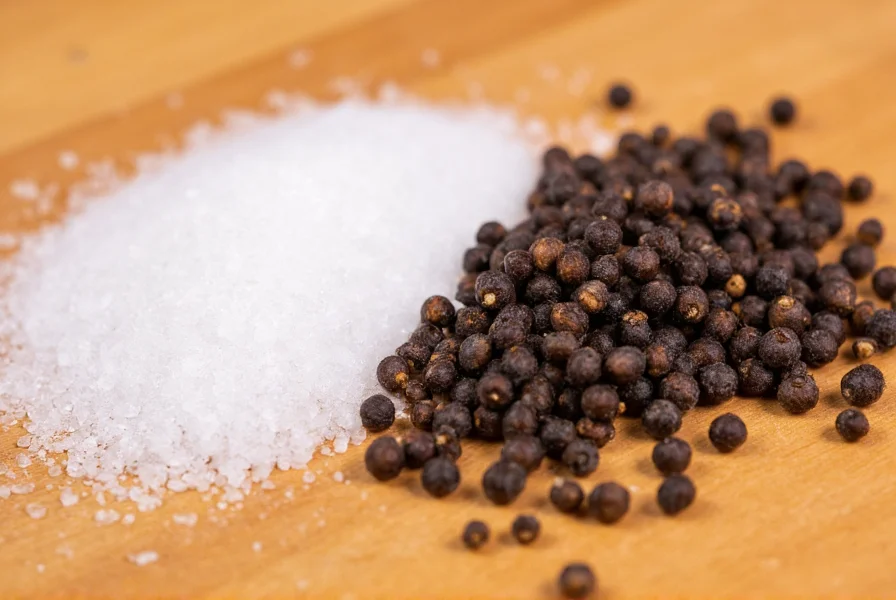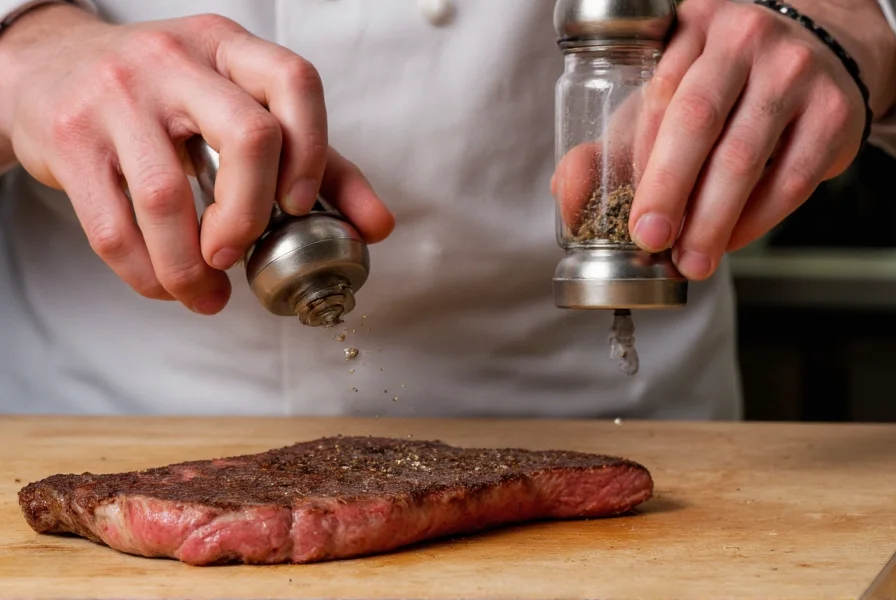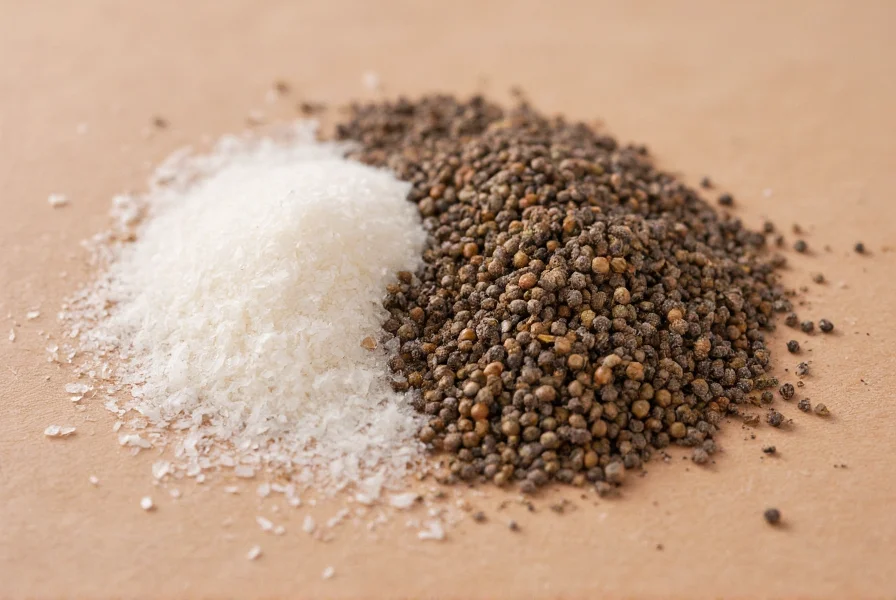Many home cooks and even professional chefs encounter confusion about basic seasoning terminology. This article clarifies the relationship between these two essential kitchen staples and explains why the phrase \"pepper of salt and pepper\" represents a common linguistic mix-up rather than an actual cooking concept.
Understanding the Salt and Pepper Partnership
Salt and pepper have been used together for centuries, creating what culinary experts call the \"dynamic duo\" of seasoning. Their partnership developed historically because both were valuable commodities that enhanced food preservation and flavor. However, they remain completely separate ingredients with distinct properties and origins.
Salt is a mineral compound (sodium chloride) that occurs naturally in seawater and rock deposits. Pepper comes from the dried berries of the Piper nigrum vine, native to South India. The phrase \"salt and pepper\" simply refers to this classic pairing, not a hierarchical relationship where pepper somehow \"belongs to\" salt.
Historical Context of the Classic Pairing
The combination of salt and pepper dates back to ancient trade routes. Salt was one of the earliest traded commodities, valued for food preservation. Pepper, sometimes called \"black gold,\" was so valuable in medieval Europe that it was used as currency. When these two precious commodities appeared together on dining tables, the phrase \"salt and pepper\" naturally emerged as a way to reference both seasonings collectively.
By the 18th century, \"salt and pepper\" had become standard terminology in English cookbooks. The phrase describes their typical presentation together in shakers or mills, not a compositional relationship. This historical context helps explain why \"pepper of salt and pepper\" creates confusion—it misrepresents their actual relationship.
| Characteristic | Salt | Pepper |
|---|---|---|
| Primary Source | Seawater or rock deposits | Piper nigrum berries |
| Chemical Composition | Sodium chloride (NaCl) | Piperine (active compound) |
| Flavor Profile | Basic taste: salty | Spicy, pungent, complex |
| Historical Value | \"White gold\" for preservation | \"Black gold\" currency |
Common Misunderstandings About Seasoning Terminology
The confusion around \"pepper of salt and pepper\" often stems from several common linguistic errors:
- Misplaced prepositions - Using \"of\" where \"and\" is appropriate
- Overgeneralization - Applying grammatical patterns from other phrases incorrectly
- Non-native speaker challenges - Difficulty with English prepositional phrases
Professional chefs emphasize that understanding proper seasoning terminology prevents cooking mistakes. When recipes call for \"salt and pepper to taste,\" they mean both seasonings should be added separately according to preference, not that pepper somehow derives from salt.
Practical Guidance for Using Salt and Pepper
Mastering the use of these fundamental seasonings requires understanding their distinct roles:
Salt enhances existing flavors and can suppress bitterness, while pepper adds its own distinctive heat and complexity. The ideal ratio varies by dish—some cuisines use more salt, others emphasize pepper. Food scientists recommend adding salt early in cooking to penetrate ingredients, while adding freshly ground pepper near the end preserves its volatile aromatic compounds.
When seasoning, consider these evidence-based guidelines:
- Use kosher salt for better control of seasoning
- Grind pepper fresh for maximum flavor impact
- Season in layers throughout the cooking process
- Taste frequently to avoid over-seasoning

Avoiding Common Seasoning Mistakes
Many home cooks make preventable errors with these basic seasonings. Understanding that salt and pepper are separate entities helps avoid these issues:
One frequent mistake involves using pre-ground pepper that has lost its volatile oils, resulting in diminished flavor. Another common error is adding both seasonings simultaneously from multi-chamber shakers, which prevents proper layering of flavors. Professional chefs recommend seasoning with salt first, then adjusting with pepper to achieve balanced flavor profiles.
Research in food science shows that the sequence of seasoning affects flavor perception. Salt modifies how we perceive other tastes, while pepper's piperine compounds interact with our heat receptors. Treating them as distinct elements rather than a single concept leads to better culinary results.

Conclusion: Embracing Proper Seasoning Terminology
The phrase \"pepper of salt and pepper\" reflects a common misunderstanding of basic culinary terminology. Recognizing that salt and pepper are separate, complementary seasonings—not hierarchical components—improves both cooking precision and communication about food preparation.
By understanding their distinct properties, historical context, and proper usage techniques, home cooks can elevate their dishes significantly. This knowledge represents foundational culinary literacy that supports more advanced cooking techniques and flavor development.
Is \"pepper of salt and pepper\" a real culinary term?
No, \"pepper of salt and pepper\" is not a recognized culinary term. It represents a common misunderstanding of the standard phrase \"salt and pepper,\" which refers to these two separate seasonings used together.
What's the proper ratio of salt to pepper in cooking?
There's no universal ratio as it depends on the dish and personal preference. Generally, salt is used more liberally than pepper. Many chefs recommend seasoning with salt first, then adding pepper to taste, as their flavor impacts differ significantly.
Why do recipes say \"salt and pepper\" instead of listing them separately?
The phrase \"salt and pepper\" has become standard culinary shorthand representing these two fundamental seasonings. It's a convention that developed historically when both were presented together at the table, not an indication of a compositional relationship.
Should I use the same type of salt and pepper for all dishes?
Different dishes benefit from different types. Kosher salt provides better control for seasoning, while sea salt works well as a finishing touch. For pepper, freshly ground black pepper offers the most flavor, though white or pink peppercorns might suit specific dishes.
When should I add salt versus pepper during cooking?
Add salt early in the cooking process to allow penetration, while adding freshly ground pepper near the end preserves its volatile aromatic compounds. This sequence maximizes the flavor contribution of both seasonings.
Frequently Asked Questions
Is \"pepper of salt and pepper\" a real culinary term?
No, \"pepper of salt and pepper\" is not a recognized culinary term. It represents a common misunderstanding of the standard phrase \"salt and pepper,\" which refers to these two separate seasonings used together.
What's the proper ratio of salt to pepper in cooking?
There's no universal ratio as it depends on the dish and personal preference. Generally, salt is used more liberally than pepper. Many chefs recommend seasoning with salt first, then adding pepper to taste, as their flavor impacts differ significantly.
Why do recipes say \"salt and pepper\" instead of listing them separately?
The phrase \"salt and pepper\" has become standard culinary shorthand representing these two fundamental seasonings. It's a convention that developed historically when both were presented together at the table, not an indication of a compositional relationship.
Should I use the same type of salt and pepper for all dishes?
Different dishes benefit from different types. Kosher salt provides better control for seasoning, while sea salt works well as a finishing touch. For pepper, freshly ground black pepper offers the most flavor, though white or pink peppercorns might suit specific dishes.
When should I add salt versus pepper during cooking?
Add salt early in the cooking process to allow penetration, while adding freshly ground pepper near the end preserves its volatile aromatic compounds. This sequence maximizes the flavor contribution of both seasonings.











 浙公网安备
33010002000092号
浙公网安备
33010002000092号 浙B2-20120091-4
浙B2-20120091-4